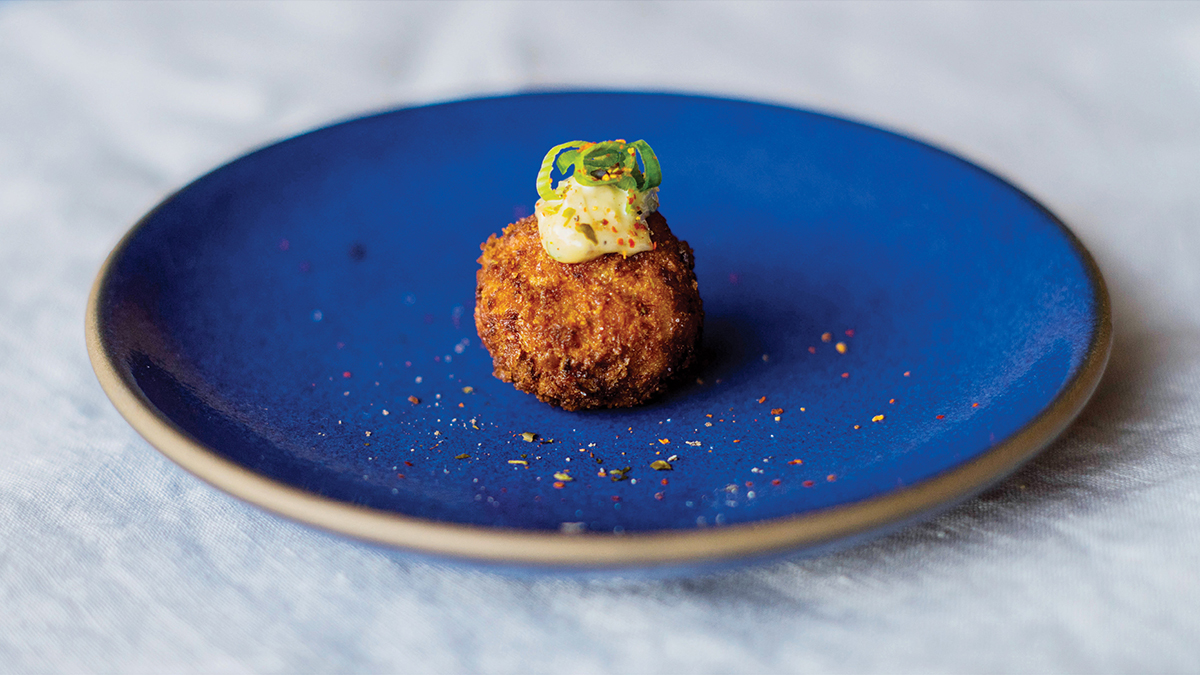Pagu Set to Open This Winter

Photograph by Ken Richardson
At a dinner party in the shared kitchen of an MIT graduate residence hall, a flaming Galician punch became both performance art and science. Ignited by Boston beverage consultant Brother Cleve inside a Tibetan singing bowl, the cocktail got the high-tech treatment from applied mathematics professor John Bush, who demonstrated his work in fluid dynamics by rubbing the malleable perimeter of the bronze vessel and creating bouncing droplets of liquid atop the fire.
It was December 2014, and O Ya alum Tracy Chang was pitching her inventive restaurant concept to the developers of MIT’s new buildings on Mass. Ave. Friends of the chef’s from academia, the restaurant industry, and the tech community had gathered to help her showcase her very Cambridge vision: a restaurant that brings together the area’s thinkers, creators, and problem solvers. “We’re all impassioned by what we do and enlivened by it,” Chang says. “That’s where my inspiration comes from.”
Chang is no stranger to culinary innovation: In 2011, she worked with chef Martin Berasategui at his Michelin-starred restaurant in the Basque Country, a six-hour drive from Ferran Adrià’s late El Bulli, long a mecca for gastronomic experimentation. She laments that she never got a chance to work there, but she’s connected with many who have from her days in Spain, and has hosted them in her role as a fellow with the Harvard Science and Cooking program, cofounded by Adrià himself. Since then, Chang’s goal has been to create her own culinary collaboration, giving her the opportunity to work with these friends, “and also be a part of what they’re developing,” she says.
Earlier this year, the chef got the good news: She’d be able to move into the ground level of the new Takeda laboratories. Walking around the cavernous, 6,000-square-foot-space, she envisioned live-edge, cherry-wood bars well stocked with espresso, sake, Spanish wines, and Basque cider. She could see counter seating around a wide, open kitchen, where guests would order casual Japanese- and Spanish-inspired bites—squid-ink-oyster bao with “norioli,” baby squid tentacles a la plancha. She visualized where three movable counters would hold packages of granola and the day’s pastries, and host after-hours demonstrations with guests she hoped would use the restaurant as an extension of their homes.
And that’s exactly what she got with Pagu, which will open its doors January 3. The Japanese word for “pug,” the name is both an homage to Chang’s curly-tailed best friend and a subtle nod to El Bulli, named after a French slang term for “bulldog.” Using food as the medium, “the soul of Pagu is a push to innovate, and create unique experiences,” Chang says. “Because you have that space to gather everyone, whatever comes beyond that in terms of collaboration…is completely up for grabs.”

Photograph by Matt Li
Pagu Pintxos
From grab-and-go morning fare to multicourse meals, Pagu’s menu is rooted in Spanish and Japanese cuisine. Take the humble fried croqueta, a tapas staple and go-to snack adapted the world over as a French croquette, Indian aloo tikki, and so on. Chang’s curry-crab version is potato-based, akin to the korokke found in Japanese izakayas. Each fried bite gets a dollop of piquant, Peruvian chili “allioli”—Chang insists on the uncommon spelling, noting the Spanish translation of its components, “garlic” and “oil.” She’s perfected the emulsion with help from researchers and chefs at the Alícia Foundation, a Ferran Adrià–led research center she’s worked with both in Catalonia and in Boston.
310 Massachusetts Ave., Cambridge, gopagu.com.
UPDATE, December 16: This post, which originally ran in the December print issue of Boston magazine, has been updated with Pagu’s opening date. It now links out to a December 16 post featuring the debut menu.


